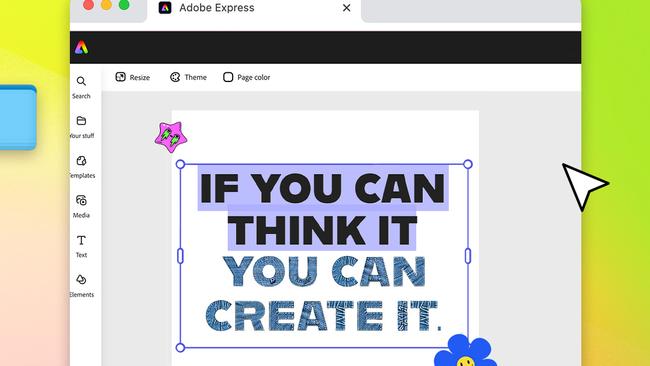Adobe adds AI into Photoshop and other products, but copyright remains a hot issue
Artificial intelligence has been introduced into Adobe’s suite of products for commercial use but the software giant has warned about copyright issues on AI-produced images.

Adobe has made its long-awaited move into generative AI, allowing creative agencies, commercial graphic designers and others to finally start producing images using artificial intelligence.
The company made its AI product Firefly available for commercial use on Wednesday, following a six-month beta trial that created more than two billion images.
But businesses have been cautioned that they might not own copyright to the images they generate with AI, creating a potential IP minefield.
It is a problem that Adobe’s chief technology officer for digital media, Ely Greenfield, is well aware of.
“It’s a question being discussed and debated by governments around the world, which is who owns the copyright for a piece of content created by AI,” Mr Greenfield said.
“What I can tell you, at least in the United States, current law, the courts have said nobody owns that copyright. So if I create a piece of content with AI … I don’t own that copyright. I cannot prevent you from using it as well. It’s an evolving space.”
The copyright warning may quell fears that AI will cost jobs, particularly in creative industries, and promote tighter controls around the use of the technology. The Writers Guild of America has been on strike for more than 130 days, demanding greater regulations for the US of AI in movie making and media production.

At Adobe – which is listed on the Nasdaq with a market value of $US247.14bn ($385.6bn) – Mr Greenfield sees AI as more of a tool to assist artists in achieving their vision, freeing them up for more creative work. It’s not unlike how a camera can record a picture more quickly than a painting, but still captures what the artist intended.
“If I take something that was generated with AI and then I did further edits on it and transformed it further, there’s a point at which it becomes a transformation of the content that is unique. Now I can own the copyright on that piece of content.
“So our advice to customers who owning that copyright is really important to them is that’s another reason why having the AI be part of your workflow rather than replacing your workflow is valuable, because you can use it but as long as you’re continuing to do and do something to make it your own, there’s still opportunity to get content a copyright on there.
“Where that tipping point is? I’m not a lawyer. I’m not sure that’s well defined. But that’s always been the problem with derivative work.”
Further, AI-generated work will be clearly labelled as such, with Mr Greenfield likening it to a nutrition label on food packaging.
“It doesn’t tell me whether it’s good or bad. That’s for me to decide,” Mr Greenfield said about the disclosure.
Firefly supports text prompts in more than 100 languages to create new content, which Adobe says is “safe” for commercial use. It even indemnifies its customers against accidental copyright infringement from any of the source material its AI platform uses.

“We designed Firefly to be something they can use safely commercially in the products. We did that first and foremost by training it on hundreds of millions of licensed, heavily moderated, high quality assets. Most of which came from our Adobe Stock collection. A number of them are public domain images or openly licensed images as well,” Mr Greenfield said.
“But every one of those images are things where we know the licence, we verified it. And we verify the contributor details about where the image was captured from, about what they have the rights to licence us and just about the content to make sure that they meet our community standards or human bias standards – they don’t have company IP in there that shouldn’t be showing up in generated content.”
This is partly why Adobe held back from joining the AI rush that was sparked last year, following the launch of ChatGPT.
“The last thing we want is for our customers to have a lot of lawsuits on their back and so when this technology – really in the middle of last year when some of the creative AI started coming out – we looked very closely at it,” Mr Greenfield said.
“We talked with our customers about whether we should integrate some of these technologies. And these were the main concerns we heard and so we knew we needed to develop in a way that was amazing and incredible, but also usable by them.”
Adobe will also throttle the use of its AI capabilities via a credits system, which is based on a customer’s level of subscription to the company’s products.
“These AI all do run on GPUs (graphic processing units), they run in the cloud and so they are expensive to run,” Mr Greenfield said.
“We have put a lot of work into managing those costs. Our goal is to get them as low as possible so that we can drive as much usage and creativity among our consumers.”
Firefly is now natively integrated into Adobe Express and Creative Cloud apps such as Photoshop and Illustrator.







To join the conversation, please log in. Don't have an account? Register
Join the conversation, you are commenting as Logout